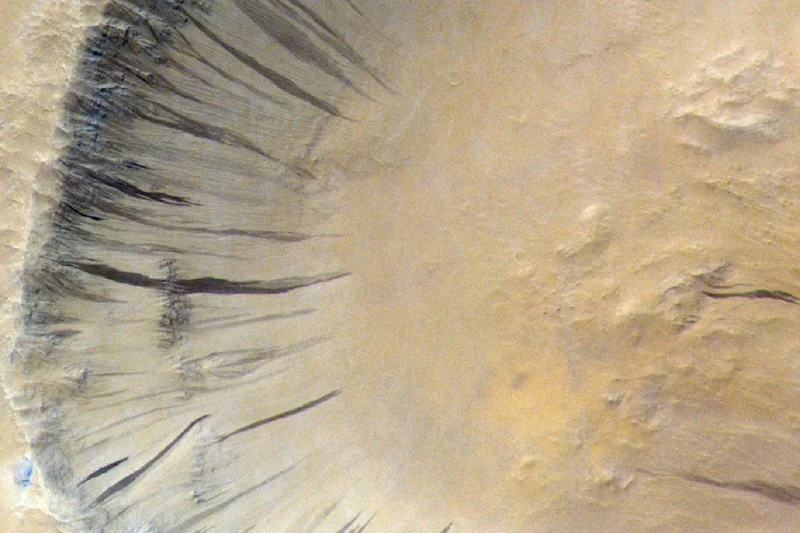
Dust in the Wind: AI Challenges Water Theory on Mars’ Mysterious Streaks
For years, the enigmatic dark streaks gracing the slopes of Martian cliffs and craters, known as slope streaks and recurring slope lineae (RSLs), sparked excitement and fueled speculation about the presence of water on Mars. This raised hopes that the Red Planet could harbor, or once harbored, life. However, a recent study is turning that theory on its head. Is the dream of readily available water on Mars just dust in the wind?
A groundbreaking research team from Brown University and the University of Bern employed the power of artificial intelligence to analyze over 86,000 high-resolution satellite images of the Martian surface, collected by NASA’s Mars Reconnaissance Orbiter (MRO) and ESA’s Trace Gas Orbiter. Their findings, published in Nature Communications, suggest a surprising culprit: wind and dust activity, not water, are the more likely explanation for these intriguing surface features.

The researchers trained an algorithm to meticulously identify slope streaks, and then correlated their locations with a wealth of environmental data, including wind speed, temperature, and dust patterns. Contrary to expectations, the analysis revealed no discernible link between the streaks and moisture, frost, or any other clear indicators of water. Instead, the streaks exhibited a stronger correlation with areas characterized by strong winds and heightened dust activity, pointing toward a predominantly dry process, where dust layers abruptly shift down slopes due to external forces like wind gusts or meteoroid impacts.
“Our study reviewed these features but found no evidence of water. Our model favors dry formation processes,” said Dr. Adomas Valantinas, a postdoctoral researcher at Brown University. Using this AI, Dr. Valentin Bickel further explained that after the AI algorithm was trained on confirmed slope streak sightings, they used it to scan more than 86,000 high-resolution satellite images.
This comprehensive approach resulted in the creation of a first-of-its-kind global Martian map of slope streaks, encompassing over 500,000 individual streak features. This vast database allowed the team to search for correlations with factors like temperature, wind speed, and hydration levels, leading to the conclusion that a dry origin is far more probable.
The shift in understanding has significant implications. Previously, if these streaks *had* been caused by flowing water, NASA would have had to be more cautious about sending rovers or landers to those areas to avoid contaminating possible Martian life. Now, with the dry dust theory gaining traction, scientists may have more leeway to explore these zones without that specific risk. However, it's crucial to remember that this doesn't negate the possibility of water elsewhere on the Red Planet, but rather refines our focus in the ongoing search for signs of life.

In the grand scheme of space exploration, sometimes ruling out possibilities is just as valuable as confirming them. This study helps us refine our understanding of Mars and guides us toward more promising locations in our quest for extraterrestrial life.
What do you think about this new research? Does the idea of a dusty, wind-swept explanation make more sense than the long-held water theory? Share your thoughts and perspectives in the comments below!